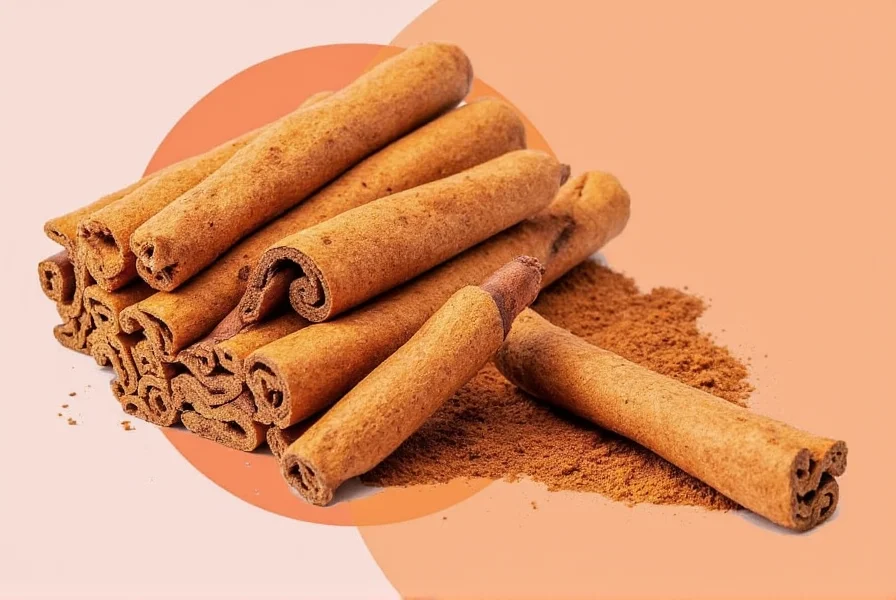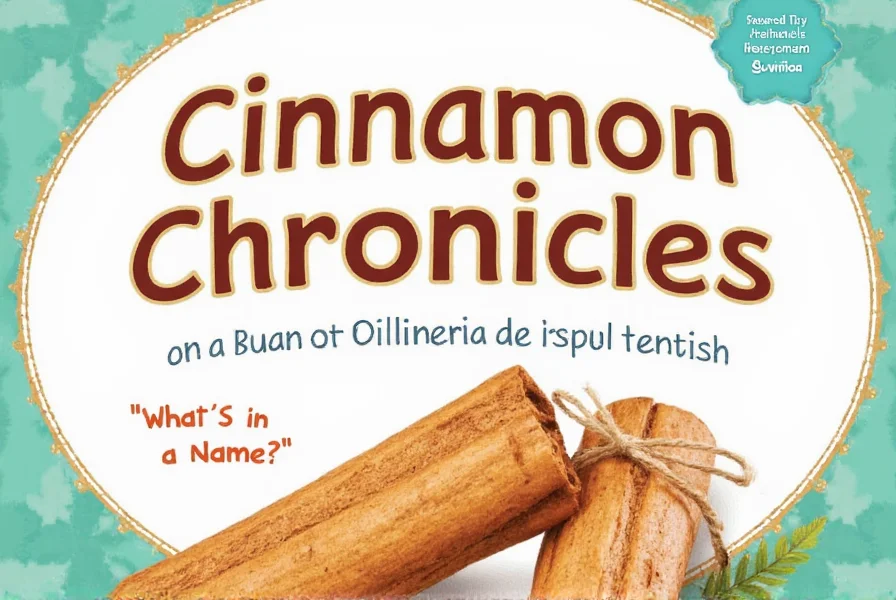Introduction: The True Cinnamon Scientific Name Explained
The scientific name for true cinnamon is Cinnamomum verum (also known as Cinnamomum zeylanicum), native to Sri Lanka. However, most cinnamon sold in supermarkets worldwide is actually Cassia (Cinnamomum cassia), a different species with higher coumarin levels. This guide explains the critical differences between these two types, including health implications, culinary uses, and how to identify them when shopping.

Cinnamon Scientific Name: Ceylon vs Cassia
The term cinnamon scientific name refers to the Latin classification for true cinnamon: Cinnamomum verum. This species is native to Sri Lanka and is often called Ceylon cinnamon. The cinnamon most commonly found in grocery stores is actually Cinnamomum cassia, known as Cassia cinnamon, which originates from China and Indonesia.

Key Differences Between Ceylon and Cassia Cinnamon
Understanding these two species is essential for both culinary and health reasons:
- Ceylon Cinnamon (Cinnamomum verum): Known as "true" cinnamon, it has a delicate, sweet flavor and is more expensive. Native to Sri Lanka and southern India, its bark is thin, brittle, and layered like parchment.
- Cassia Cinnamon (Cinnamomum cassia): The most common commercial variety, it has a stronger, spicier taste and is significantly cheaper. Originating from China and Indonesia, it features thick, hard bark with a single layer that's difficult to break.
| Feature | Ceylon Cinnamon (Cinnamomum verum) |
Cassia Cinnamon (Cinnamomum cassia) |
|---|---|---|
| Origin | Sri Lanka, Southern India | China, Indonesia |
| Texture | Thin, layered, papery bark | Thick, hard, single-layered bark |
| Taste | Mild, sweet, complex | Strong, spicy, intense |
| Coumarin Content | Low (0.01-0.04 g/kg) | High (0.3-1.3 g/kg) |
| Price | Higher | Lower |

How to Choose the Right Cinnamon: Practical Buying Guide
Make informed decisions with these expert tips:
- Check Labels Carefully: Look for "Ceylon" or Cinnamomum verum on packaging. If it only says "cinnamon," it's almost certainly Cassia.
- Visual Identification: Ceylon sticks are thin, brittle, and form multiple layers like parchment. Cassia sticks are thick, hard, and typically rolled into a single layer.
- Consider Your Needs: For daily consumption or health benefits, choose Ceylon due to its low coumarin. For bold recipes like stews or spice rubs, Cassia's stronger flavor works well.
- Smell Test: Ceylon has a subtle, floral sweetness. Cassia has a sharper, more pungent aroma.

Creative Culinary Uses for Both Types
Maximize your cinnamon experience beyond traditional applications:
- Savory Dishes: Add Ceylon to Moroccan tagines or Indian curries for delicate warmth. Use Cassia in robust Mexican mole sauces where stronger flavor is needed.
- Beverages: Ceylon enhances delicate teas and coffee without overpowering. Cassia works well in mulled wine or chai for intense spice notes.
- Health-Conscious Applications: For daily blood sugar support, use Ceylon cinnamon due to its low coumarin content. The European Food Safety Authority (EFSA) recommends limiting coumarin intake to 0.1 mg per kg of body weight daily.
- Gourmet Desserts: Ceylon shines in delicate pastries like crème brûlée, while Cassia adds depth to chocolate-based desserts.

What is the scientific name for true cinnamon?
The scientific name for true cinnamon is Cinnamomum verum (also known as Cinnamomum zeylanicum). This species is native to Sri Lanka and is commonly called Ceylon cinnamon.
What's the difference between Ceylon and Cassia cinnamon?
Ceylon cinnamon (Cinnamomum verum) has thin, layered bark, mild sweet flavor, and low coumarin levels. Cassia cinnamon (Cinnamomum cassia) has thick, hard bark, strong spicy flavor, and high coumarin content (up to 100 times more than Ceylon). The coumarin difference is critical for health considerations.
Is Ceylon cinnamon better than Cassia?
For daily consumption or health-focused use, Ceylon is superior due to its low coumarin content. The National Institutes of Health (NIH) and EFSA recommend limiting coumarin intake, making Ceylon safer for regular use. Cassia is suitable for occasional cooking where strong flavor is needed.
Why does cinnamon have different scientific names?
Cinnamon comes from multiple species within the Cinnamomum genus. Cinnamomum verum (Ceylon) and Cinnamomum cassia (Cassia) are the two most common commercial varieties. The different names reflect botanical classification, geographic origins, and distinct chemical properties.
How can I tell if I'm buying Ceylon or Cassia cinnamon?
Check packaging for "Ceylon" or the scientific name Cinnamomum verum. Visually, Ceylon sticks are thin, brittle, and layered like parchment. Cassia sticks are thick, hard, and single-layered. Ceylon has a lighter brown color and sweeter aroma compared to Cassia's darker, reddish-brown appearance and sharper scent.
Is Cassia cinnamon unsafe due to coumarin?
Cassia cinnamon contains high levels of coumarin (0.3-1.3 g/kg), which in large quantities can cause liver damage. The European Food Safety Authority (EFSA) recommends a maximum daily intake of 0.1 mg coumarin per kg of body weight. For regular consumption, Ceylon cinnamon (0.01-0.04 g/kg coumarin) is the safer choice.
What's the best cinnamon for daily use?
For daily consumption, Ceylon cinnamon (Cinnamomum verum) is recommended due to its significantly lower coumarin content. The National Institutes of Health (NIH) confirms cinnamon's blood sugar benefits, but Cassia's high coumarin levels pose health risks with regular use. For occasional cooking, Cassia works well.
Science-Backed Health Considerations
Research shows cinnamon's health benefits are influenced by its scientific name:
- Blood Sugar Regulation: According to the National Institutes of Health (NIH), cinnamon may help lower blood sugar levels. However, Cassia's high coumarin content requires caution for diabetics using it regularly.
- Coumarin Safety: The European Food Safety Authority (EFSA) sets a maximum daily intake of 0.1 mg coumarin per kg of body weight. Ceylon cinnamon contains 0.01-0.04 g/kg coumarin, while Cassia contains 0.3-1.3 g/kg.
- Antioxidant Properties: Both varieties contain polyphenols, but Ceylon's lower coumarin makes it safer for long-term antioxidant benefits.
- Heart Health: Studies in the Journal of Agricultural and Food Chemistry show cinnamon may support cardiovascular health, but Cassia's coumarin content could counteract benefits with regular use.

Conclusion: Know Your Cinnamon, Know Your Health
Understanding the cinnamon scientific name isn't just academic—it directly impacts your health and culinary experience. While both Cinnamomum verum (Ceylon) and Cinnamomum cassia (Cassia) are cinnamon, their differences in coumarin content, flavor, and safety profile make knowing which you're using essential.
For daily consumption, especially for health benefits, Ceylon cinnamon is the scientifically recommended choice. When cooking for special occasions where strong flavor is needed, Cassia remains a practical option. Always check labels carefully and prioritize quality for your health and culinary satisfaction.












 浙公网安备
33010002000092号
浙公网安备
33010002000092号 浙B2-20120091-4
浙B2-20120091-4